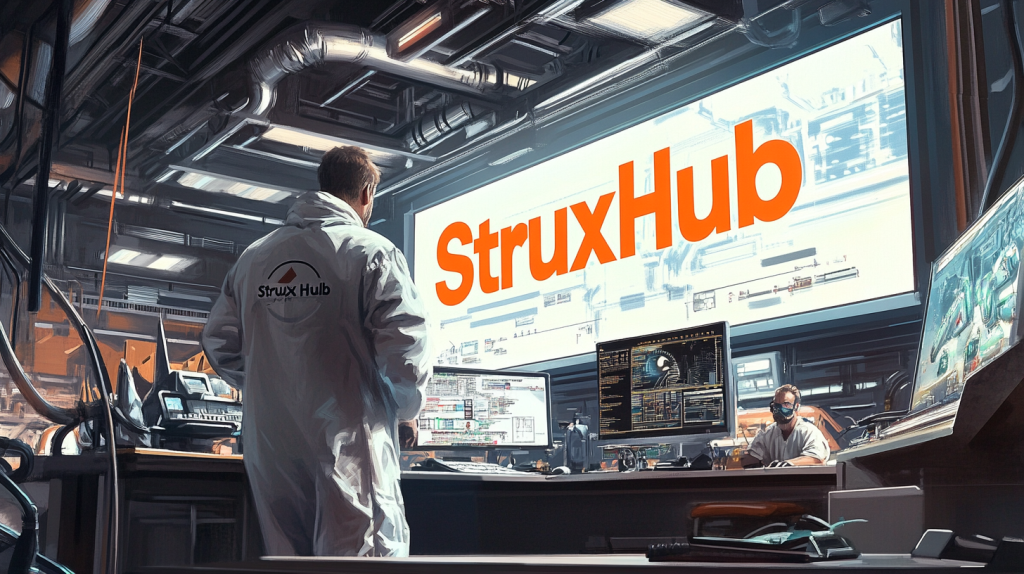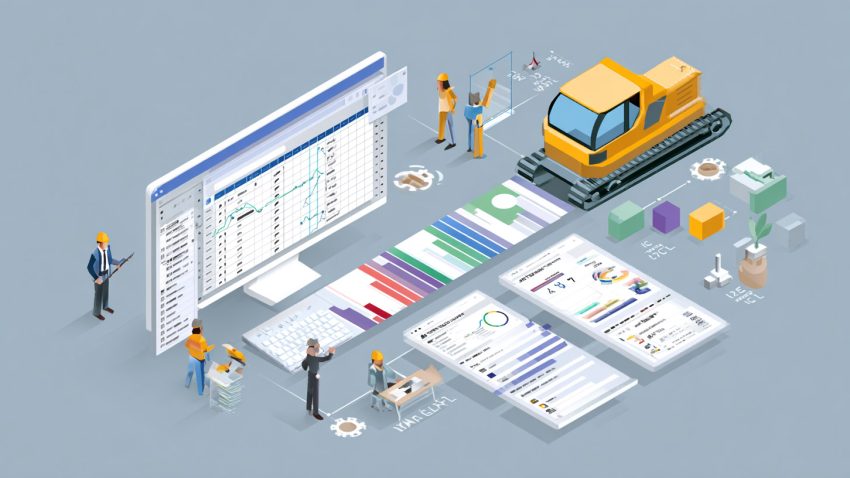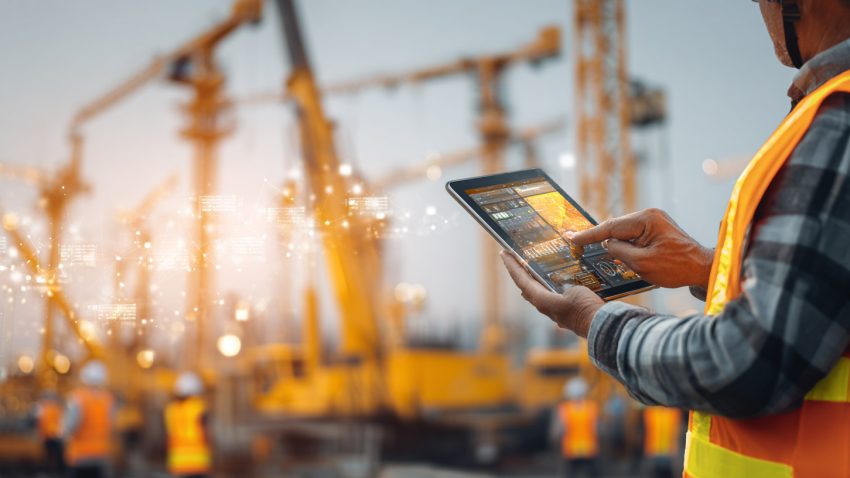Best Guide to Construction Risk Management: How Top Contractors Control Jobsite Risk and Improve Field Accountability
Table of Contents:
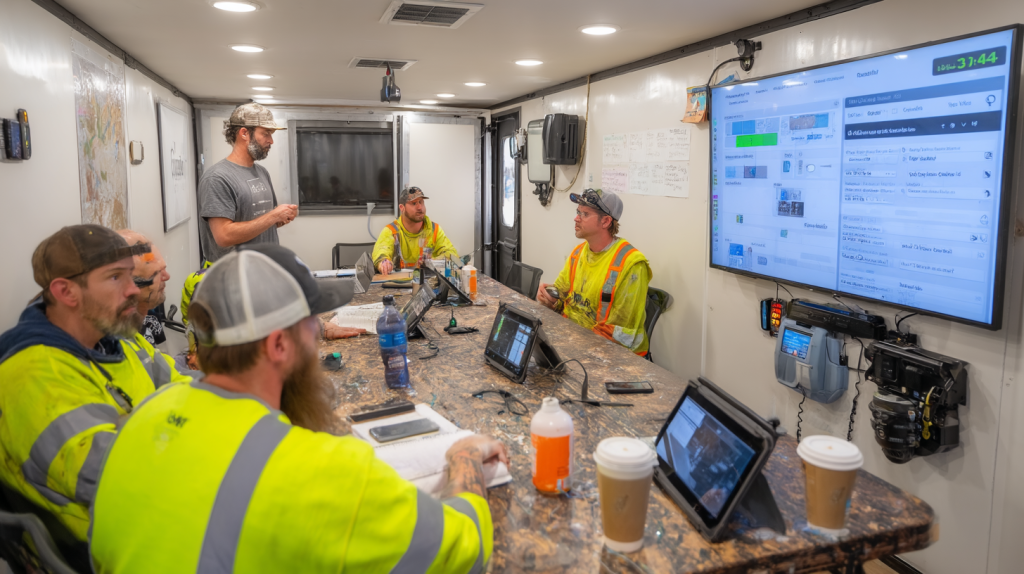
In construction, risk is everywhere—from safety hazards and material delays to incomplete inspections and miscommunication between teams. For top contractors, managing these risks isn’t just about avoiding problems—it’s about creating the structure, accountability, and visibility needed to deliver projects safely, on time, and on budget.
That’s where construction risk management tools come in. These platforms give your team a clear view of what could go wrong—and the ability to respond before issues escalate. From daily task tracking and field issue logging to compliance documentation and real-time coordination, these tools give you the power to build with more confidence and fewer surprises.
In this guide, we’ll explore how leading contractors approach risk on the jobsite, what tools and practices help reduce exposure, and how visibility and accountability transform risk into opportunity.
What Are the Most Common Types of Construction Risk?
Before you can manage risk, you need to understand what you’re facing. Construction risk falls into several categories, and most jobsite challenges involve a combination of these:
- Operational risk – Delays due to missing materials, labor shortages, out-of-sequence work, or equipment failures.
- Safety risk – Jobsite hazards, incomplete safety checks, or poor enforcement of safety protocols.
- Compliance risk – Failing inspections, missing documentation, or poor closeout records that lead to legal exposure or fines.
- Financial risk – Overordering, rework, missed change orders, or cost overruns tied to poor coordination.
- Reputational risk – Client dissatisfaction due to miscommunication, delays, or poor project documentation.
These risks are often interconnected. A missed inspection can delay a task, which triggers overtime labor and affects your schedule and budget. That’s why top contractors treat risk management as a real-time, proactive workflow—not a once-a-week report.
Top Benefits
- Fewer jobsite surprises
Knowing your risk landscape in real time helps teams respond before problems escalate. - Improved quality and safety
When risks are logged, tracked, and assigned, they get resolved faster—and with better outcomes. - Better field accountability
When everyone can see open risks and responsible parties, tasks don’t fall through the cracks.
Best Practices
- Categorize risks as they arise
Use tags like safety, material, or schedule to understand patterns and root causes. - Involve field teams in daily risk identification
Supers and foremen are your front line—empower them to flag issues early. - Track open risks to completion, not just documentation
Managing risk means resolving it, not just recording it.
Identifying risk is the first step—acting on it in real time is what keeps projects on track.
Why Real-Time Field Visibility Is Critical to Risk Reduction
Most jobsite risks don’t show up in a spreadsheet—they show up in the field. A scaffold wasn’t inspected. A delivery was short. A crew showed up without the right materials. And unless your teams can log and share that info in real time, the opportunity to prevent downstream issues is lost.
That’s why field visibility tools are essential. These platforms allow supers, foremen, and crews to capture jobsite updates as they happen—whether it’s a photo of a cracked beam, a missed checklist item, or an out-of-sequence task. That information is shared instantly with the rest of the team, triggering the necessary response before the issue impacts other scopes.
When field visibility becomes part of your workflow, it does more than reduce risk—it builds a culture of awareness, accountability, and trust. Teams feel empowered to speak up, PMs stay informed, and leadership gains the insight needed to allocate resources and prevent recurrence.
Top Benefits
- Faster identification of field-level problems
Risk doesn’t hide when updates come from the people doing the work. - Better coordination between field and office
Everyone sees the same risk log and can assign tasks or resources accordingly. - Increased team engagement
When crews can see their input taken seriously, they’re more likely to participate in proactive problem solving.
Best Practices
- Make field visibility tools mobile and user-friendly
The faster someone can log an issue, the more likely it gets reported. - Incorporate real-time risk reviews into daily huddles
Don’t just talk schedule—talk safety, materials, and blockers too. - Tag and assign issues directly to responsible parties
Visibility without ownership doesn’t reduce risk—accountability does.
The sooner you see a problem, the sooner you can fix it—and avoid bigger problems down the line.
Related Articles:
Best Construction Scheduling Software for General Contractors and Superintendents
How to Choose the Best Construction Scheduling Software for Your Team and Project Size
Best Procurement Management Software for Construction: Faster Bids and Better Materials Management
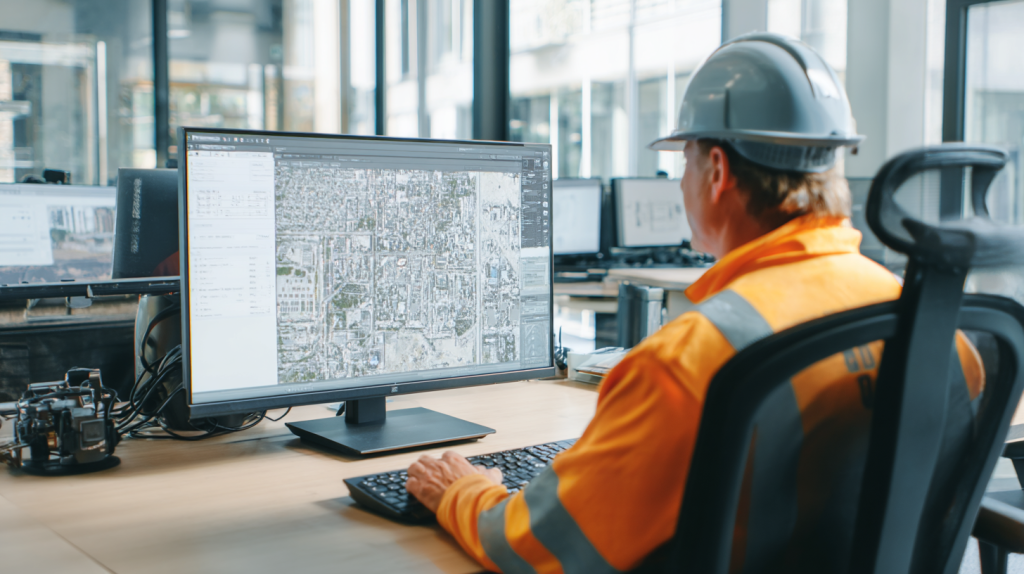
How Does Risk Management Improve Accountability on the Jobsite?
Risk management isn’t just about fixing problems—it’s about assigning responsibility and closing the loop. When jobsite risks go untracked, they linger in the background, creating uncertainty and allowing avoidable issues to escalate. But when risks are logged, categorized, and assigned to specific people, accountability becomes clear—and action follows.
The best risk management tools allow field teams to tag risks by category (like safety, quality, or delivery), log status updates, and assign resolution tasks with due dates. This creates a living record of jobsite health, where nothing is invisible and everyone knows who’s responsible for resolving each item.
Accountability also extends to trade partners and vendors. With the right platform, you can track delays by scope, monitor vendor response times, and document repeated issues for follow-up. Over time, this builds performance history that informs future bid reviews, project planning, and relationship management.
Accountability isn’t about blame—it’s about clarity. When teams know what’s expected of them, they perform better. And when risks are owned—not ignored—they get solved.
Top Benefits
- Clear ownership of risks and follow-up actions
No more finger-pointing—everyone knows what needs to be done and by whom. - Fewer unresolved or recurring issues
Risk logs track what’s been addressed and what’s still outstanding. - Improved subcontractor and vendor performance
Transparent risk tracking shows who’s delivering—and who’s falling behind.
Best Practices
- Assign every risk to a specific person or trade
Generic “team” assignments slow resolution—be specific. - Track status with clear labels like open, in progress, resolved
Keep the log clean and easy to filter by urgency or impact. - Review accountability trends monthly
Identify patterns in resolution delays and adjust team workflows accordingly.
Accountability is what turns risk management from a report into a results-driven process—and from a liability into an advantage.
What Are the Key Tools Used in Modern Construction Risk Management?
Modern construction risk management goes far beyond clipboards and post-it notes. Today’s top contractors are using a mix of digital tools to capture, categorize, assign, and resolve risks in real time—often right from the field. These tools aren’t isolated—they’re integrated into daily operations, making risk tracking an active part of jobsite execution, not an afterthought.
Key tools include:
- Mobile field reporting apps for capturing jobsite issues, delays, and safety observations.
- Task management platforms that link risk items to daily tasks and team assignments.
- Digital checklists and inspection tools for pre-task planning, safety verifications, and QA/QC workflows.
- Material tracking systems that highlight shortages, delivery delays, and staging conflicts.
- Integrated dashboards that consolidate risk logs across trades, categories, and project phases.
The best systems are user-friendly, customizable, and mobile-first—so supers and crews can log issues quickly, and PMs can track progress from anywhere.
Rather than relying on memory or waiting for weekly reports, contractors using these tools spot issues in the moment, assign them immediately, and keep projects on track through proactive coordination.
Top Benefits
- Faster risk detection and resolution
Field teams log what they see, and management responds in real time. - Centralized risk visibility across the entire project
One platform houses all risk-related data—accessible by all stakeholders. - Better compliance and documentation
Time-stamped logs and resolution records support audits, claims defense, and owner reporting.
Best Practices
- Equip every jobsite leader with the same digital tools
Standardize how risks are reported and resolved—no matter the job or team. - Integrate tools into daily routines, not just inspections
Real-time risk management only works if it’s continuous, not once a week. - Make dashboards part of weekly reviews with executives or clients
Show progress, trends, and accountability metrics in a visual, actionable format.
With the right tools, your teams won’t just react to risk—they’ll manage it as they build.
Related Articles:
Best Construction Procurement Management Software for General Contractors and Superintendents
Best Construction Materials Management Software for Tracking Inventory and Orders
Top Construction Materials Tracking Software for Inventory, Deliveries, and Jobsite Control
What Is the Best Software for Construction Materials Management and Tracking
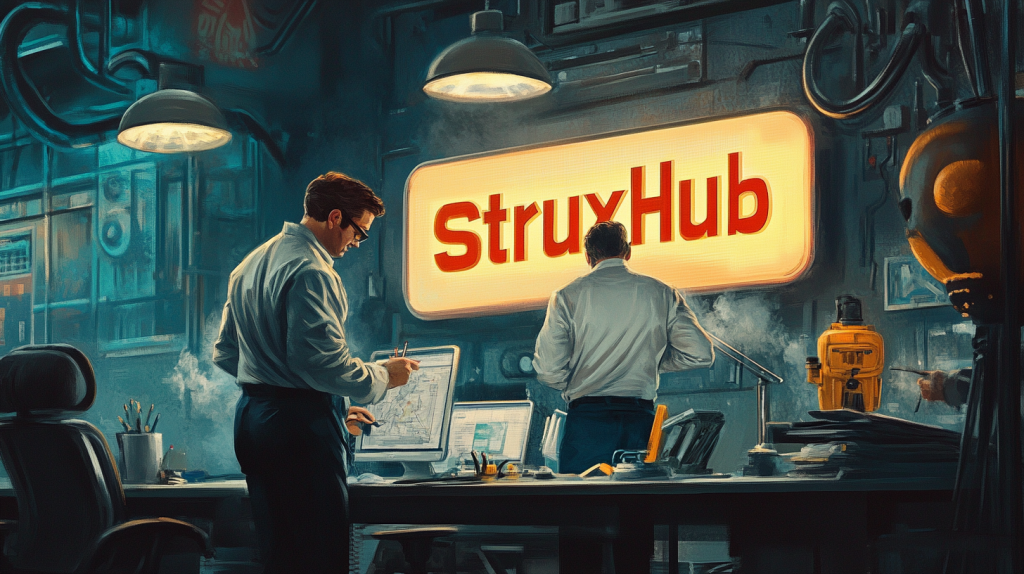
StruxHub
Experience the power of StruxHub today and witness firsthand how it can revolutionize your construction operations.
How Does Risk Management Support Safety, Quality, and Scheduling?
Risk management isn’t a separate department—it’s woven into every part of the build. When done right, it directly supports safety, quality, and scheduling by reducing friction, improving clarity, and enabling proactive decision-making.
From a safety perspective, real-time risk tools help crews document hazards, near misses, and safety walk results immediately. Foremen can assign follow-ups to correct conditions, while supers and safety leads ensure PPE compliance, fall protection, and equipment checks don’t fall through the cracks.
For quality, teams use punch item tracking and inspection tools to prevent rework. QA/QC processes become part of the daily flow, ensuring crews are working from approved plans, using verified materials, and documenting installs. If something isn’t right, it’s caught early—long before it becomes expensive to fix.
In terms of scheduling, risk visibility allows project teams to adjust resources, shift milestones, and communicate changes faster. If a delivery is delayed, a task is blocked, or an inspection is missed, everyone is updated immediately. This helps maintain sequencing and improves trade coordination across all phases of construction.
Together, these improvements reduce the three most common causes of project failure: unsafe conditions, poor work quality, and missed deadlines.
Top Benefits
- Fewer safety violations and incidents
Risks are logged before accidents happen—and follow-ups are documented. - Better inspection outcomes and reduced rework
Real-time checks and approvals help catch problems early. - Stronger schedule reliability
Risks are tied to tasks and milestones—so your plan adjusts as conditions change.
Best Practices
- Incorporate risk reviews into daily huddles
Talk about more than just production—highlight safety and quality risks too. - Link risk logs to inspections and schedule updates
Keep documentation connected and transparent across departments. - Track not just resolution—but recurrence
Use logs to identify patterns and train crews on recurring issues.
When risk management supports core project metrics, it becomes a competitive advantage—not just a checklist.
What Role Does Team Culture Play in Effective Risk Management?
No matter how advanced your software or systems are, your team’s mindset ultimately determines how well you manage risk. Without a culture of accountability, openness, and follow-through, even the best tools go underused—and risks slip through the cracks.
In strong risk cultures, field teams feel empowered—not punished—for identifying potential issues. Supers encourage teams to log problems early, trade partners own their scopes, and PMs treat risk resolution as a top priority, not a side task. Leadership models proactive problem-solving and supports consistent follow-up—not finger-pointing.
Tools alone don’t change behavior. But when combined with clear expectations, training, and positive reinforcement, they help reinforce habits that lead to better outcomes. When your crews see that logging an issue leads to real action—not delays or blame—they participate more consistently.
That’s why the most successful risk management programs are built into the culture—not just the workflow.
Top Benefits
- Higher engagement from field and trade teams
When workers feel heard and supported, they report more—and earlier. - Faster issue resolution and fewer repeat problems
A team that owns its risks solves them before they escalate. - Improved morale and reduced turnover
Crews are more loyal to companies that prioritize safety, clarity, and accountability.
Best Practices
- Recognize and reward proactive behavior
Publicly praise crews who identify and resolve risks—before they become incidents. - Include risk management in onboarding and training
Make it part of the job—not just a compliance exercise. - Lead by example at every level
When PMs and executives prioritize risk, the field follows their lead.
Culture is the foundation of effective risk management—and it’s built one habit, one huddle, and one resolution at a time.
Related Articles:
Best Software to Track Construction Material Deliveries, Inventory, and Jobsite Usage
How StruxHub Helps Contractors Manage Risk in Real Time
StruxHub was built to help construction teams reduce execution risk through real-time visibility, accountability, and coordination. While many tools focus on planning or reporting, StruxHub bridges the gap between what’s on the schedule and what’s happening on site—giving field and office teams a live view of risk-related activity.
With StruxHub, your team can log risks as they arise—delays, missing materials, safety flags, punch items, or incomplete tasks. These risks are categorized, assigned, and tracked to resolution right inside the platform. No more chasing emails or wondering who’s responsible—every risk is visible and accountable.
StruxHub also helps teams coordinate in real time. If a task is delayed due to a missing delivery, the system flags the issue, alerts stakeholders, and updates task readiness. If an inspection is missed, it’s logged, assigned, and resolved—all while staying connected to the overall schedule and trade plan.
For leadership teams, StruxHub provides risk dashboards that show open issues, resolution rates, and recurring patterns—helping you make better decisions across projects. And for field teams, it’s mobile-first and easy to use—so participation doesn’t become another burden.
With risk management embedded in your daily tasks, StruxHub keeps your team focused, informed, and prepared to handle challenges as they happen.
Top Benefits
- Real-time risk logging and resolution
No delays, no confusion—just clear visibility and faster follow-up. - Improved field-to-office accountability
Every issue is assigned and tracked—keeping your team aligned. - Integrated scheduling and materials coordination
Risks aren’t isolated—they’re connected to real tasks, milestones, and trade activity.
Best Practices
- Use StruxHub to tag all risk-sensitive tasks
Whether safety, inspection, or delivery-related—connect risk to execution. - Review risk dashboards during weekly coordination meetings
Spot trends early and adjust your workflows to prevent future issues. - Train crews to log risks as part of their normal routine
Keep it simple, fast, and focused on solutions.
With StruxHub, risk isn’t just tracked—it’s actively managed, every day, on every jobsite.
Related Articles:
Best Guide to Construction Management Software
The Best Guide to Delivery Management Systems (DMS) for Commercial Construction
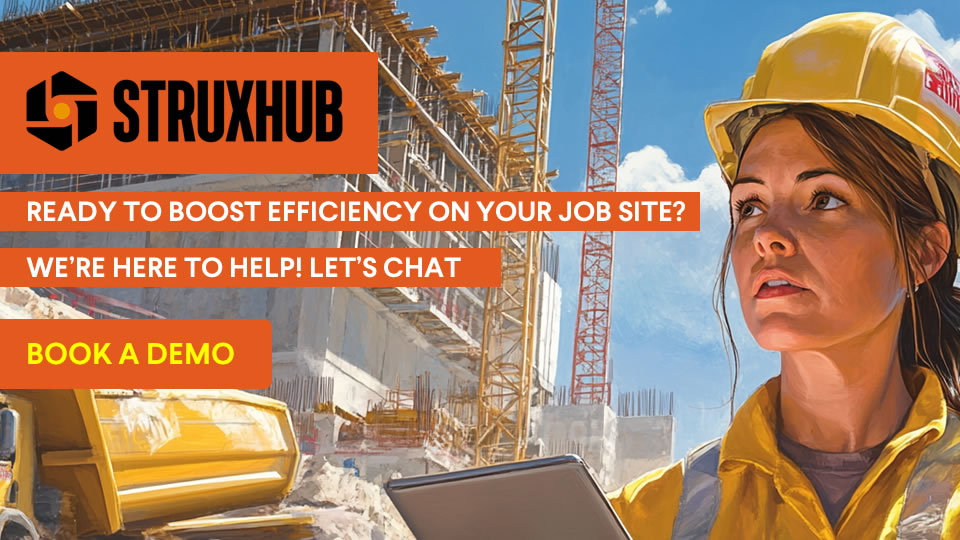
FAQ
What is construction risk management, and why is it important?
Construction risk management is the process of identifying, evaluating, mitigating, and monitoring potential problems that could affect the safety, schedule, budget, or quality of a construction project. These risks can include anything from late material deliveries and subcontractor delays to safety incidents, change order disputes, or noncompliance with regulations.
Without a proactive risk management strategy, problems that might have been resolved early can escalate—causing cost overruns, rework, legal exposure, or even injury. Risk management is important because it allows project teams to prepare for uncertainty, respond quickly to challenges, and minimize the impact of the unexpected.
The most effective construction risk management strategies are not just reactive—they’re embedded into the daily jobsite workflow. Leading contractors don’t wait for weekly reports or post-mortem reviews. They empower their field teams to report risks in real time, assign ownership for resolution, and track the status of those issues until they’re closed.
In modern construction, where project complexity, subcontractor coordination, and stakeholder expectations are higher than ever, risk management provides a framework for clarity, collaboration, and continuous improvement. It’s the safety net that allows your team to build with confidence—and the system that protects your reputation, your profitability, and your people.
What types of risks can be managed with digital risk tracking tools?
Digital risk tracking tools are designed to help construction teams manage a wide range of jobsite risks—across safety, schedule, quality, labor, logistics, and compliance. These platforms make it easy to log risks as they arise, assign responsibility, and monitor progress in real time.
Here are the most common types of risks that can be tracked:
- Safety Risks – Hazards like unprotected edges, equipment malfunctions, or noncompliant PPE use. Field teams can log observations and assign safety corrections immediately.
- Material Risks – Delays, damaged shipments, or missing components that could impact task sequencing or inspections.
- Scheduling Risks – Slipped task start or end dates, out-of-sequence trade work, or inspection delays.
- Labor Risks – Understaffed trades, skill mismatches, or missed crew start times.
- Compliance Risks – Missing documentation, incomplete checklists, or out-of-date submittals.
- Quality Risks – Installation defects, missed hold points, or failed punch inspections.
By using a digital platform, these risks can be categorized, tagged, and reported in a consistent format—making it easier to identify trends, prioritize action, and prevent recurrence. Some platforms even allow users to attach photos, link risks to tasks or deliveries, and escalate unresolved issues to management.
Ultimately, digital risk tracking turns risk management into a shared, real-time responsibility—ensuring nothing gets overlooked and everything gets addressed.
How does accountability improve risk resolution on construction projects?
Accountability is the engine that drives risk resolution. Without clear ownership, risks linger. They’re talked about, noted in meetings, or added to reports—but no one takes full responsibility to close them out. When contractors embed accountability into their risk management process, resolution becomes faster, more consistent, and more measurable.
Here’s how accountability improves outcomes:
- Clarity of ownership – When a risk is assigned to a specific individual, there’s no confusion about who’s expected to take action. It avoids “group think” and ensures the right person is responsible.
- Defined deadlines – Assigning a risk with a due date increases urgency and ensures the issue is addressed before it causes downstream problems.
- Performance tracking – Risk logs and dashboards help project managers see which teams or individuals are resolving issues quickly—and where patterns of delay may require attention.
- Improved communication – When responsibility is clear, follow-ups are simpler. Teams don’t waste time debating who was supposed to act—they focus on solving the problem.
- Team culture – A culture of accountability builds pride and ownership. When field crews know their observations lead to results, they’re more engaged and proactive.
Digital tools like StruxHub reinforce accountability by allowing tasks and risks to be assigned, updated, and closed directly in the platform. With visibility for everyone—field, office, and leadership—accountability becomes transparent, not confrontational. This makes the process fair, efficient, and action-driven.
Related Articles:
Best Guide to AI in Construction Project Management: How Smart Tools Are Improving Construction Site Productivity; AI
Best Guide to Geographic Information Systems (GIS) in Construction: How Location-Based Data Improves Construction Project Management
Best Guide to Smart Helmets in Construction: Enhancing Safety, Communication, and Site Efficiency
Best Construction Scheduling Software for General Contractors and Superintendents
Best Guide to Solar Farm Construction Management: Top Solar Construction Management Software for Tracking Projects, Deliveries, and Compliance
How can construction firms train teams to identify and report risks more effectively?
Risk management starts with awareness. But for many teams, identifying and reporting risks isn’t second nature—it’s a skill that must be taught, modeled, and reinforced. Contractors who want to build a strong risk culture need to train their teams to spot potential issues early, communicate clearly, and use the right tools consistently.
Here are several ways to build better reporting habits:
- Train during onboarding – Make risk identification a core part of every new hire orientation. Explain what to look for, why it matters, and how to report it.
- Use examples and case studies – Show real photos of past jobsite issues and walk teams through the consequences (delays, rework, safety incidents) of not reporting early.
- Keep reporting simple and accessible – Use tools that allow risk logging in a few taps or photos. The easier it is, the more likely it will be used.
- Recognize proactive behavior – Reward field team members who regularly report risks or help resolve them. Positive reinforcement builds momentum.
- Train supervisors to model behavior – When supers and foremen lead by example—logging risks daily and following up consistently—crews follow their lead.
Firms should also set expectations clearly. Make risk reporting part of daily huddles, pre-task planning, and field checklists. Over time, these habits create a safety net of vigilance that reduces execution risk and improves project delivery.
How does StruxHub support real-time construction risk management?
StruxHub empowers construction teams to manage risk proactively by integrating issue tracking, task coordination, and field communication into a single real-time platform. It’s not just a reporting tool—it’s a jobsite execution engine built to surface, assign, and resolve risks as they happen.
With StruxHub, teams can log field issues from any mobile device—capturing photos, tagging the problem (like “material delay” or “safety hazard”), and assigning it to the right person. PMs and supers get notified instantly, and the issue is visible on project dashboards for full team awareness.
More importantly, StruxHub links risks to daily jobsite activities. For example, if a delivery is delayed and a framing task is blocked, the system marks that task as “awaiting materials,” helping the team adjust labor resources in real time. If a punch item or inspection is missed, it can be flagged and followed up on before it causes downstream delays.
StruxHub also supports real-time accountability. Issues are tracked by status (open, in progress, resolved), and every update is time-stamped. This gives leadership a full view of what’s happening—and how quickly the team is responding.
Because StruxHub is mobile-first and built for the field, crews adopt it quickly and consistently. It becomes part of the job—not an extra chore—ensuring that risk tracking is always live, always current, and always actionable.

